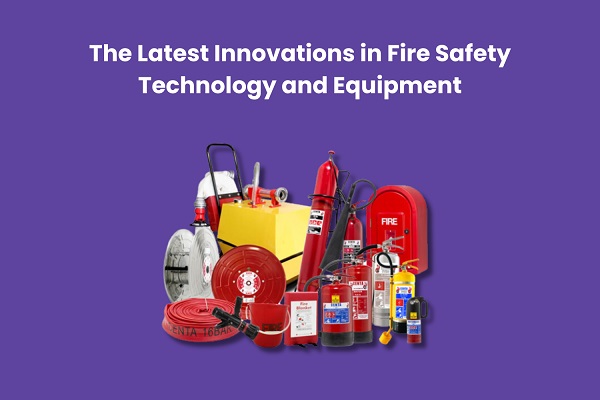In safety and security, advancements in technology play a pivotal role in enhancing our ability to prevent, detect, and respond to potential threats. The field of fire safety is no exception, witnessing a surge in innovations designed to protect lives and property. In this blog, we explore the latest breakthroughs in fire safety technology and equipment, emphasizing the importance of these developments in Fire Safety Systems, especially for those undergoing a comprehensive Fire Safety Course.
Table of Contents
- The Role of Technology in Modern Fire Safety Systems
- Smart Fire Detection Systems
- Fire Safety Drones
- Fire-Resistant Materials
- Advancements in Construction Materials
- Artificial Intelligence (AI) in Fire Safety
- Advanced Fire Suppression Technologies
- Water Mist Systems
- Clean Agent Fire Suppression
- Remote-Controlled Firefighting Robots
- Enhanced Fire Safety Training Through Virtual Reality (VR)
- Virtual Reality Fire Simulations
- Augmented Reality (AR) for Emergency Response
- Conclusion
The Role of Technology in Modern Fire Safety Systems
Here is the role of Technology in Modern Fire Safety Systems:
Smart Fire Detection Systems
A fundamental component of fire protection for many years has been using traditional smoke detectors. However, developing sophisticated fire alarm systems is the most recent breakthrough in this field. Homeowners, building managers, or emergency services may get real-time warnings from these systems because of their superior sensors and connections. The detectors may be remotely monitored by mobile applications, which allows for a quick reaction in the event of a fire.
Fire Safety Drones
The use of thermal imaging technology by drones has greatly improved firefighting operations. These UAVs may fly over a fire to gauge its severity, pinpoint its origins, and provide firefighters with vital information. This technology paves the way for more effective and strategic firefighting tactics by improving situational awareness.
Fire-Resistant Materials
Building materials with improved fire resistance have received much attention in the building sector. These technologies, such as fire-resistant wood coatings and enhanced fire-resistant textiles, help build buildings that can better resist the early stages of a fire, giving people more time to evacuate and put it out.
Artificial Intelligence (AI) in Fire Safety
By facilitating early detection and predictive analysis, AI radically alters fire safety. Machine learning algorithms may sift through sensor data, searching for trends that might point to greater fire danger. By taking this preventative stance, we can put out fires before they ever start.
Advanced Fire Suppression Technologies
Let’s explore the Advanced Fire Suppression Technologies:
Water Mist Systems
While conventional sprinkler systems have proven useful in reducing fire hazards, water mist systems provide additional protection. These devices dispense a thin mist of water, allowing them to absorb heat more effectively across a broader surface area. This does double duty by putting out the fire and reducing the amount of water that might harm the region.
Clean Agent Fire Suppression
Rather than relying on water, modern fire suppression systems are increasingly turning to clean agents like gases or chemical compounds. Data centres, labs, and museums all utilise delicate equipment, and these agents are perfect for safeguarding it from flames since they swiftly put out fires without leaving residue.
Remote-Controlled Firefighting Robots
Firefighting robots that can be commanded remotely save lives in dangerous circumstances. With the help of cameras and sensors, these robots can enter tight places, evaluate the situation, and even spray out fires. This invention improves the effectiveness of firefighting operations while also protecting human lives.
Enhanced Fire Safety Training Through Virtual Reality (VR)
Virtual Reality Fire Simulations
Those taking a fire safety course may benefit greatly from VR simulators’ immersive and lifelike experience. Trainees may learn to use fire extinguishers and evacuate safely in virtual surroundings created using VR technology. Training programmes are improved, and people are better prepared for real-world events via this hands-on approach.
Augmented Reality (AR) for Emergency Response
Currently, augmented reality apps are being developed to aid fire departments. Responders may access vital information, such as floor layouts, hazards, and real-time statistics, using these gadgets that overlay them into their field of vision. Under pressure, this tech makes better decisions and facilitates better coordination.
Conclusion
The fire safety environment is always changing due to the advancements in technology. Both experts in the industry and those looking to improve their knowledge via a thorough fire safety course must embrace these developments. In the future, fire hazards will be tackled with unprecedented preparation and efficiency thanks to the newest advancements in fire safety, such as smart detection systems, improved suppression technologies, analytics powered by artificial intelligence, and so on. If we want to make the world safer for people, we need to keep up with these developments.
